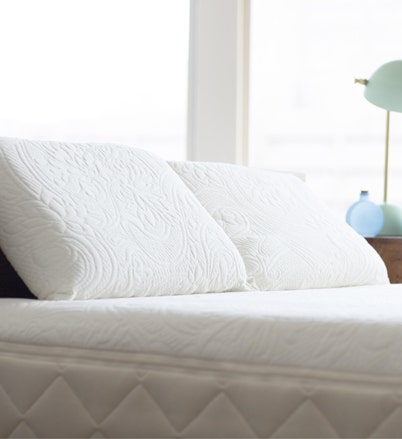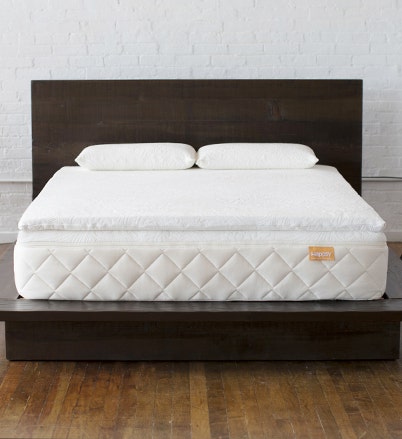
Essential oils have become almost synonymous with self-care. Can't sleep? Try lavender or ylang-ylang. Feeling anxious? Give rose or sandalwood a shot. Headache? Peppermint!
But, wait … before you turn on your diffuser, you might want to learn a bit more about what exactly it is you’re exposing your home environment to. Not to mention another important question: are essential oils sustainable? There are upsides and downsides to everything, including essential oils.
We’ll give you the lowdown on the potential sustainability and safety risks that come with essential oils below – read on.
What makes an oil an "essential" oil?
It’s ironic, but essential oils aren’t really oils at all. Essential oils are the concentrated, hydrophobic liquid “essence” extracted from plants – hence the name “essential.”
Animal and vegetable oils are hydrophobic, too, and the fact that essential oils are similar in composition to these oils is where they got their misleading moniker. They look and feel similar, but oils are classically made from fatty acids, and essential oils are not.
Are essential oils sustainable? Yes …
Essential oils are extracted through a process called steam distillation of the most fragrant part of the plant. Take rose oil, for example. Rose petals are suspended over boiling water. Steam rises from the water through the plants, and it extracts the essential oil as it rises. It is then captured and cooled. The steam becomes water again, and the hydrophobic, fragrant rose oil is left behind.
The byproduct of this process? Water! In the case of rose oil, you’re left with rosewater, which is commonly used as a facial toner. Rather than leaving behind waste or pollution, the process of manufacturing oils is quite renewable. Pretty cool, right?
… and no


This part’s not so cool. According to aromatherapy educator Andrea Butje, it takes all of the petals from 30-50 roses to produce just a single drop of rose oil. Rose oil is up there with jasmine oil on the more labor-intensive oils to produce – with 16 oz. of jasmine oil requiring 4,000,000 jasmine buds to produce – but even the more common essential oils require a large amount of resources for a small yield of oil.
Essential oils are either wild harvested or farmed. Wild harvesting sounds like the preferred method, but ethical harvesting requires that less than 5% of the population be harvested, making it impossible to keep up with market demands using this method.
So, the alternative is farming. Farming large amounts of non-native crops is a resource-intensive process that wreaks havoc on the land and soil and discourages biodiversity. Non-sustainable farming leaves communities decimated in its wake, with loss of income, loss of opportunity (now that the once-fertile land is unsuitable for farming) and risks of landslides.
Essentially, it doesn’t matter that essential oils aren’t inherently unsustainable if the industry that produces them is.
Essential oils aren’t always safe, either
Natural doesn’t always mean safe. (In fact, natural doesn’t always mean natural either – but that’s a different conversation.) We’re skeptical of any “miracle” product that’s claimed to solve all ailments. (Come on, can apple cider vinegar really help you lose weight, make your hair shiny and cure cancer?) But beyond not always being all they’re cracked up to be, essential oils can actually cause more harm than good to your health in some cases.
Bergamot and lemon oils can increase your risk of sunburn. Tea tree and lavender oils can affect male hormone levels. Anise can decrease the effectiveness of antidepressants. Some oils can even cause more serious harm when ingested, such as seizures, hallucinations and even comas.
Always research the side effects before using essential oils. This is especially true if you are using them:
- On or around small children
- While pregnant
- In conjunction with other medications
If you’re unsure, always consult your doctor first.


Are essential oils safe for dogs and other pets?
The most common negative side effects of essential oils in humans are rashes and irritation. In pets, however, ingestion or even inhalation of these oils can be deadly. Specifically, for dogs, quite a few popular essential oils are poisonous. If your pet ingests any of the following oils, seek emergency veterinary care.
- Cinnamon
- Citrus
- Pennyroyal
- Peppermint
- Pine
- Sweet birch
- Tea tree
- Wintergreen
- Ylang ylang
Even essential oils that are not toxic in pets can cause irritation, stress and behavioral changes. Always consult with your vet before introducing a new substance into your pet’s environment.
The keys to using essential oils responsibly
Like most things in life, there is a way to use essential oils responsibly. Keep these two things in mind.


Use essential oils sparingly
There is no magic cure-all treatment, as much as we wish there was. Essential oils probably won’t drastically change your life. But, they do have small, proven benefits, and when used properly can have a positive effect. Do your research before using essential oils, and make sure any health claims are backed by clinical research. If you’re unsure, consult with a specialist.
Always consider your alternatives, too. Want your home to smell like roses? Instead of using that resource intensive rose oil we talked about, try using its fragrant byproduct instead. Always ask yourself before consuming, “Do the benefits outweigh the risks?” If you’re unsure of the answer, it’s probably a no.
Shop ethically
At Happsy, we’re big proponents of shopping ethically. When it comes to essential oils, consider the price point. You now know the work and resources that go into manufacturing these oils – it’s a lot. If the price point is super low, that’s usually a red flag that could signify unfair labor conditions and shady harvesting tactics.
Additionally, avoid purchasing oils made from at-risk or endangered species. Rosewood and sandalwood are a couple very common examples of essential oils made from endangered plants. Take a look at this up-to-date, comprehensive list of endangered plants, and stay informed.
Consuming responsibly goes far beyond essential oils
Have you ever considered your mattress in this regard? Most mattresses on the market are made with synthetic materials that wreak havoc on the Earth and rot away in landfills for thousands of years when we are done with them. In fact, an estimated 20 million mattresses end up in landfills – every year.
But, there’s another way to sleep, a more sustainable way: certified organic sleep. Want to learn more? Check out the top benefits of a Happsy organic mattress. You can also shop the mattress here!





